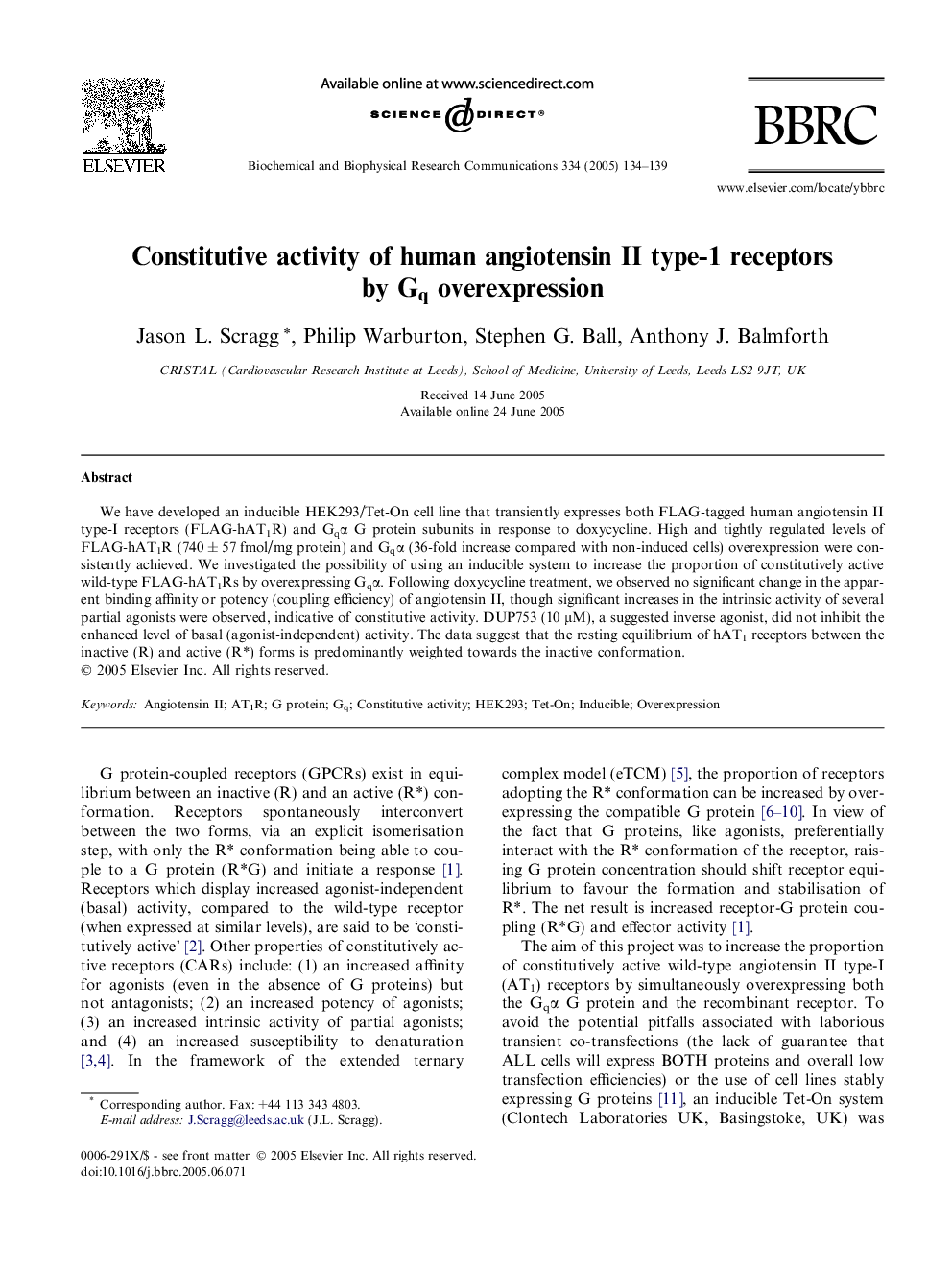| Article ID | Journal | Published Year | Pages | File Type |
|---|---|---|---|---|
| 10769464 | Biochemical and Biophysical Research Communications | 2005 | 6 Pages |
Abstract
We have developed an inducible HEK293/Tet-On cell line that transiently expresses both FLAG-tagged human angiotensin II type-I receptors (FLAG-hAT1R) and Gqα G protein subunits in response to doxycycline. High and tightly regulated levels of FLAG-hAT1R (740 ± 57 fmol/mg protein) and Gqα (36-fold increase compared with non-induced cells) overexpression were consistently achieved. We investigated the possibility of using an inducible system to increase the proportion of constitutively active wild-type FLAG-hAT1Rs by overexpressing Gqα. Following doxycycline treatment, we observed no significant change in the apparent binding affinity or potency (coupling efficiency) of angiotensin II, though significant increases in the intrinsic activity of several partial agonists were observed, indicative of constitutive activity. DUP753 (10 μM), a suggested inverse agonist, did not inhibit the enhanced level of basal (agonist-independent) activity. The data suggest that the resting equilibrium of hAT1 receptors between the inactive (R) and active (R*) forms is predominantly weighted towards the inactive conformation.
Related Topics
Life Sciences
Biochemistry, Genetics and Molecular Biology
Biochemistry
Authors
Jason L. Scragg, Philip Warburton, Stephen G. Ball, Anthony J. Balmforth,
